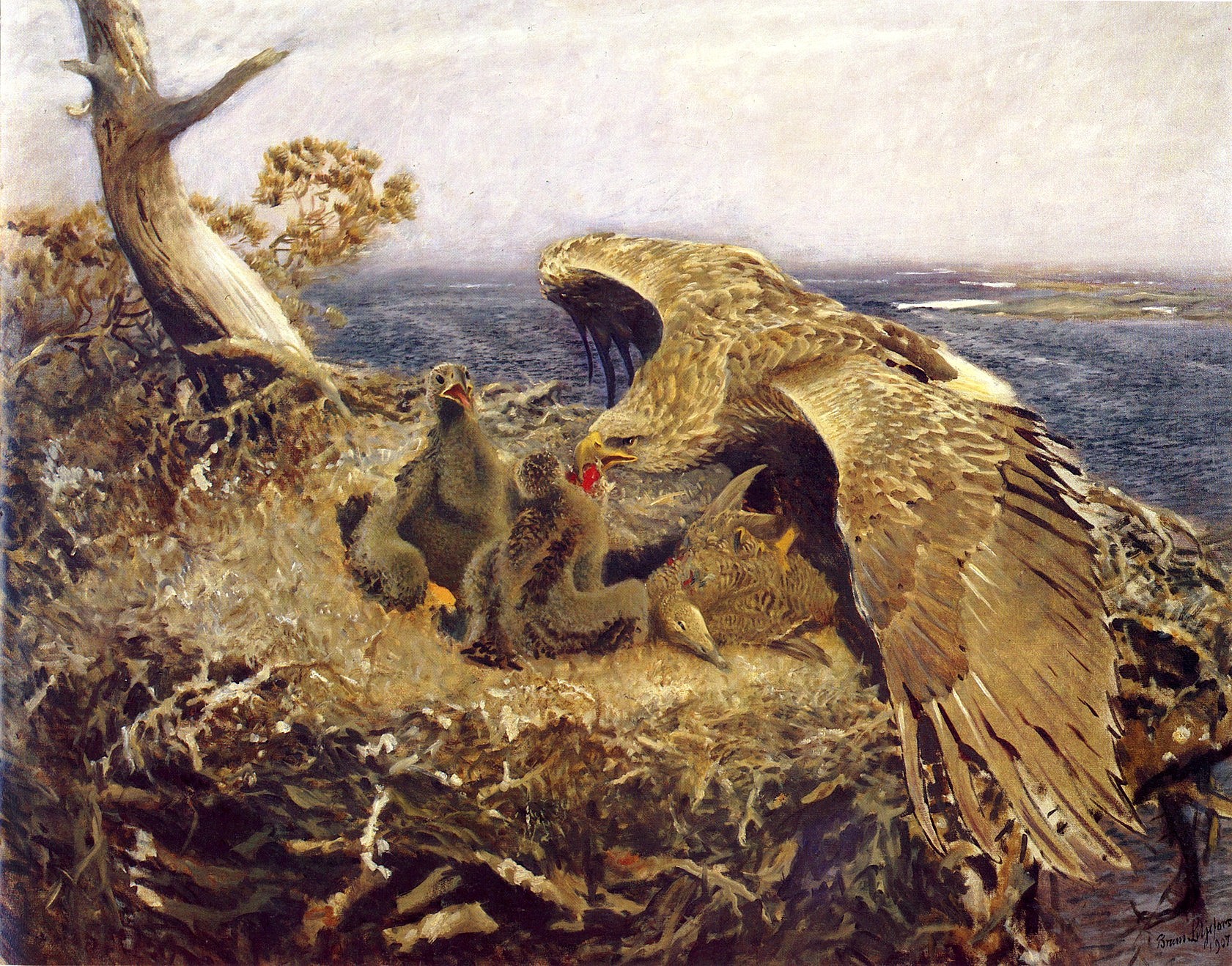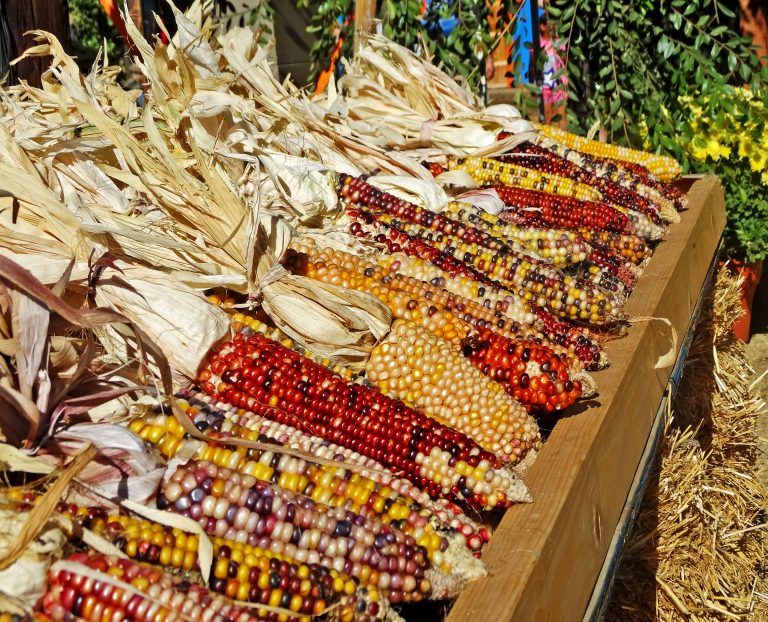Thanksgiving is an official holiday in seven countries around the world, but there are still other nations that have similar, unofficial, harvest celebrations that remind one to be thankful for a bountiful harvest, family, and more. In the US, Thanksgiving is celebrated on the fourth Thursday of November, falling this year on Nov. 25.
Here, the holiday commemorates the first harvest feast which the Plymouth colonists shared with the indiginous people who befriended them and helped them to survive their first season in a new land.
While some Native Americans shun the holiday as the beginning of a bad relationship, in which their people were treated egregiously; many choose to embrace the tradition of giving thanks, which is central to Native culture and heritage. Like many other ancient peoples, Native Americans have celebrated the autumn harvest and given thanks for Nature’s abundant gifts for thousands of years.
Notkikad and the Indian Summer
Based on the story as told by Joseph Bruchac.
In Abenaki legend, there was once a man named Notkikad, who was very virtuous. He worked hard to provide for his family and was good to his wife and children. Every year he kept a big garden and grew plenty of food, for which he always thanked Tabalkad, The Master of Life.
Success
You are now signed up for our newsletter
Success
Check your email to complete sign up
One year, however, a late frost killed his garden in the spring. When he replanted it in the summer, a drought dried everything up. He made another attempt in autumn, but the plants were killed when the weather turned cold.
While his family had gathered nuts and berries and other wild edibles, it was not enough to replace the corn, beans, and squash that they counted on to feed them through the long, cold winter. It was already quite cold and he did not know how they were going to survive.
Finally, he asked Tabalkad for help. With a small fire and an offering of tobacco, he implored The Master of Life, “I am deeply troubled, for my family cannot survive without the food that I should have grown. I have always been thankful for your bountiful gifts, but now I must ask for help. Please tell me what to do.”
That night he had a dream. In the dream, Tabalkad came and addressed Notkikad, “I will provide you with these special seeds. Plant them, and they will have time to grow.”
Nokikad awoke the next morning to find the seeds beside him. He took them outdoors and found the weather to be warm and summery, although the autumn leaves were still falling. He and his family tilled the garden and planted every last seed.
After one day had passed, the seeds had not only germinated, but sprouted visible shoots out of the ground. A second day passed and the young plants were half grown. After several days of this rapid growth, the plants had mature fruit ready to harvest.
Notkikad and his family harvested enough corn, beans, and squash to last through the winter. They dried the food and stored it safely in their wigwam before autumn returned, which it did. As quickly as the summer weather had appeared, it vanished, with winter close at hand.
That special time of warm weather that usually appears well into autumn was called Nibubalnoba, or “a man’s summer” by the Abenaki people. Today we know it as Indian summer, and it serves as a reminder to be thankful for all that we receive from Heaven and Earth.

Chief Eagle teaches a lesson on gratitude
Adapted from the Lenni Lenape Archives
It was once held by the Delaware tribe that a warrior who wore the feathers of a live eagle was ensured good fortune, bravery and courage to last a lifetime. To secure such a talisman, young hunters would bait eagles with wolf meat.
Once there was an ambitious brave who sought the feathers of an exceptional eagle. He killed a wolf and brought the meat to a high cliff where eagles would find the bait. After some days of attracting eagles, he was ready to make his attempt. He placed a large piece of fresh meat close to the edge of the cliff, and hid himself behind a tree, poised to catch an eagle with his forked stick.
One eagle promptly approached the bait, but the haughty young man thought it too small, and shooed it away. Another came in its stead, but he drove it off as well, for he sought something extraordinary. Again and again eagles came and he rejected them.
Finally, a great raptor, larger than the man himself, and with feathers the color of blood, alighted on the cliff. This eagle was not interested in the bait, however, but went straight for our young warrior. He carried the man off in his talons to a very high cliff from which there could be no escape.
A big nest sat on the cliff, with four hungry eaglets inside it. After placing the young warrior into the nest with the young birds, the red eagle said to him, “I am the chief of all eagles. I sent you several eagles to provide you with feathers, but you were greedy for finer plumage and rejected them all. As punishment for your selfish ambition you will have to stay here and watch after my grand-eaglets until they are able to fly you back to where you came from. With this I hope you will learn to be satisfied with what you are given.
So our hero was left to tend the nest, and this he did very well. He earned the love and friendship of the whole Eagle family.
Time passed and the eaglets grew and learned to fly. As they took longer and longer outings from the nest, the warrior sometimes feared they would not come back and bring him home. But finally one day, the large eagle came with good news. “My grand-eaglets are now ready to take you back to the place where I found you, my friend. I will see you safely there.” The hunter was grasped in the talons of two young eagles and carried off. Escorted by their grandfather, they took him back to the nearby cliff from which he had been collected.
Arriving at the place where he had baited the eagles, the hunter readily found some loose feathers and was happy to take them. He knew now to be grateful for what he was given, and returned to his tribe a wiser warrior.
















